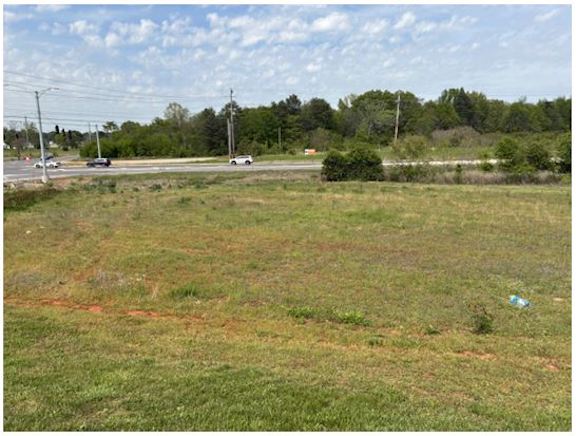Studies rank state dangerous for teen drivers
Published 6:30 am Wednesday, June 14, 2017
Young drivers have a notoriety when it comes to the rules of the road, especially in these days of distracted driving. Based on a study from credit.com, Alabama ranked fifth in the nation as the most dangerous state for teen drivers, and a wallethub.com study on the safety of teen drivers ages 15-19 ranked Alabama 38th in the nation.
Athens Police Chief Floyd Johnson said though he knows the area has its fair share of accidents, he can’t narrow it down to a single age group.
Trending
“I know (teenagers) are more likely to have accidents because of their experience level and the distractions there, but I think it’s an individual thing,” he said. “Some are more cautious and some aren’t.”
What’s the danger
Johnson said a lot of factors go into the causes of accidents, one major factor being the location of where people are driving.
“If they’re driving on (U.S.) 72 west of Athens and in Huntsville, there’s a lot of traffic and a lot of distractions,” he said. “If you’re driving on back roads, there is not as much traffic and as many distractions.”
Local parent Marsha Blankenship lives in West Limestone and said she is more worried about her newly licensed son, William, driving on back roads because of the lack of traffic.
“One thing I’ve noticed in the country is people going across the (center) line. It’s always been a problem on our road because it’s curvy,” she said, adding she’s watched drivers run stop signs because they can see there’s nothing coming down the road.
Trending
Experience, or lack thereof
The credit.com survey noted one of the reasons teenagers get such a bad rap for their driving is because of their experience level, a statement Johnson agrees with.
“I think experience is the best thing you can possibly have and that’s one thing they don’t have,” Johnson said. “That has a lot to do with it. The older you get, you’ve driven on ice, you’ve driven on wet roads and you’ve learned how to adjust to driving in those environments. (Teenagers) don’t have those experiences. At some point we’ve all been there.”
Blankenship said she worries about her son’s inexperience dealing with unexpected events on the road. Her son seconds her concern.
“I’m a little bit nervous,” William said after having his driver’s license for mere hours. “Other people on the road are nerve-racking because a lot of people out here are speeding or running stop signs.”
Johnson said he doesn’t think 16-year-old drivers have enough experience to be on the roads alone.
“At some point in time someone said 16 is wise enough to drive a vehicle,” he said. “How much that car weighed and how fast it went at the time, I don’t know. Cars are faster and lighter now and the trees are just as hard and the concrete is just as hard.”
Blankenship said even though it might mean driving her teenager around a little longer, she wouldn’t mind if the driving age were increased.
“It wouldn’t bother me to raise the driving age to 18,” she said. “I think (teenagers’) maturity level and their brains are better prepared at that age. There are more distractions and the cars aren’t the steel monsters they were. We don’t have the necessity for (driving) we did then. In the ’30s, ’40s and ’50s kids were dropping out of school and working to help their families.”
Though it may seem more teenagers are being involved in accidents now, credit.com cited the Insurance Institute for Highway Safety which said in 2015, 2,898 teen drivers were involved in fatal vehicle crashes nationwide. The number has decreased since the 1970s, when teens were involved in nearly 10,000 crashes a year.
Limestone County Coroner Mike West said, based on his data from a year ago, the average person killed in a traffic crash is 37.7 years old, though the data did not specify who was driving.
“We had 28 fatalities with five of them 19 or below,” he said, adding the highest age was 61.
Stay alert
As technology expands and communication efforts becoming easier to access, one obvious road danger is distracted driving.
The credit.com study said based on a Center for Disease Control survey, 44 percent reported either emailing or texting while driving or doing both while driving.
Blankenship, an instructor at a community college, said she doesn’t worry as much about William texting and driving because of how cautious he is on the road, but she knows his fellow drivers are probably driving distracted.
“I lecture my students all the time about texting, but it’s everybody,” she said. “I know we lecture teenagers about it, but everybody is distracted. That’s one thing I feel comfortable about with William, even though he spends a lot of time on his phone, I don’t think he will be a kid who does that. He’s conscientious and careful.”
Blankenship said the car William will drive has a hands-free capability allowing him to give the car commands for his phone. With William being the youngest of Blankenship’s three children, she said she tries to teach by example when driving.
“I’ll tell him to dial a number for me or I’ll say, ‘Read this text to me,’” she said. “I’ve got to set a good example before (the children) start doing it because they’re going to be risky anyway because they’re teenagers.”
Click it
Johnson said he doesn’t blame all young people for distracted driving and thinks some of the increased injury and fatality rates go back further than cellphones.
“We’re seeing a lot of people hurt and killed because they aren’t wearing seat belts. I don’t know why. The only thing I can come up with is that so many of the public-service announcements people run are directed toward hands-free devices and I think we’ve gotten away from seat belts. It’s still there, it’s still required, it will still save your life.”
Johnson said based on four years of data from APD, drivers ages 16 to 19 were involved in 852 accidents. That number doesn’t indicate whether the drivers were at fault or not, nor does it indicate whether the wrecks involved single or multiple cars.
What’s the cost
Parents are facing an increase in costs when they have a teen driver in the home whether their child is involved in a crash or not. As soon as a person is a licensed driver, most parents put him or her on their car insurance — a costly must-have.
Blankenship said she has had a driver under the age of 25 on her family’s auto policy for more than 10 years.
With her oldest son about to turn 25, her family’s policy should decrease in price, but since she has a new driver, it’s the opposite.
“It’s going to go up $250 a month,” she said.
The Wallet Hub survey cited the Center for Disease Control, which said 15- to 19-year-olds make up seven percent of the population but rack up 11 percent of all costs resulting from motor-vehicle injuries.
What helps
Johnson said it helps that Alabama breaks teen driver’s licenses into three stages, with the first being a learner’s permit, the second a restricted driving license and the third an unrestricted license.
According to the Alabama Department of Public Health, drivers ages 16 and less than six months after turning 17 are prohibited from having more than one non-family passenger — other than the parent, guardian or supervising licensed driver at least 21 years of age. They are not allowed to drive between the hours of midnight and 6 a.m. unless under special circumstances. Restricted drivers are also prohibited from using any handheld communication devices. Violations will result in an extension of the graduated license period and/or suspension of the license.
Wallethub.com rated Alabama’s good driving laws as 20th in the nation.





